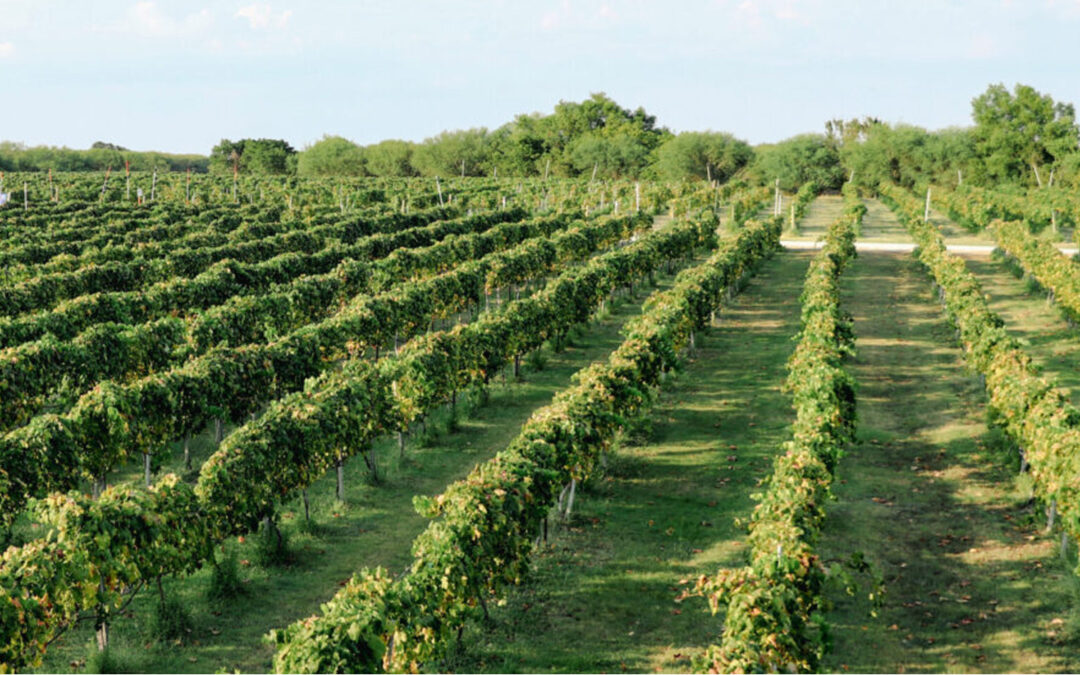By Amie Nemec – writer, Somm, and co-owner of TXwinelover.com
Texas is big. Texans known for big hearts, big smiles and now, big wines. Covering over 268,500 square miles, Texas is even bigger than the country of France. While Texas wineries are not as well-known as many of those in France, they are certainly trying hard and growing. The state’s diverse geography includes coastal beaches, lush forests, rolling hills, mountain peaks and desert plains. The range of geography also means varied climates and soils, all of which impact the characteristics of wine grapes.
Wine lovers are becoming more curious about the details of the wines they drink, and where the wine comes from is an important detail. The same grape grown in different regions can have different characteristics. Learning exactly where the grapes are grown is helpful so you can more easily identify areas you like and choose new wines with confidence.
Wine is popular around the globe. However, you may be surprised to learn that more than half the wines in the world come from just four countries: Italy, Spain, France and the United States. Every winemaking country has its own laws regarding wine production, and these rules can get pretty complicated. Let’s focus on wines made in America and how to know exactly where the wine comes from.
An American Viticultural Area, also known as an AVA, defines a region where wine grapes are grown. Each of these designated areas has a geographic or climatic feature that distinguishes it from the surrounding area. These specific features affect the characteristics of grapes grown there. Every AVA has a defined boundary that the Federal Government has approved following a formal application process. To give you an example, the well-known Napa Valley in California is an AVA. The region has specific characteristics such as temperatures, rainfall, geology, soil composition, elevation and physical features that differ from other parts of the state. The aim of establishing a new AVA is to distinguish specific wine-growing regions, helping growers, wineries and wine enthusiasts better understand and identify where grapes and wines originate. Currently, 269 AVAs exist in 34 states across our country. But why are AVAs important?
A wine’s label will state the origin, which is where the grapes are grown. If you are familiar with the AVAs in our state, you’ll have a better idea of where your bottle of Texas wine originated. The AVA indicates where the grapes were grown, regardless of where the winery or tasting room is situated. The grapes used to make a wine can come from another town, region, state or even a different country.
Within the state of Texas, there are eight AVAs. These areas cover only a portion of the state so some vineyards are outside a defined AVA. If at least 75 percent of the grapes in a wine are grown in Texas, the wine can be labeled as Texas. If at least 85 percent of the grapes were grown in a defined AVA, the AVA can be listed on the label. You may also see the specific vineyard name noted on a label which can help you zero in on particular growers you enjoy. These are the eight American Viticultural Areas in Texas: Texas Hill Country, Texas High Plains, Texoma, Mesilla Valley, Davis Mountains, Escondido Valley, Bell Mountain, and Fredericksburg in the Texas Hill Country.
Most of the state’s grapes are grown in the Texas High Plains AVA, a region near Lubbock in the Panhandle. By contrast, the most significant number of winery tasting rooms are situated in the Texas Hill Country AVA surrounding the quaint town of Fredericksburg in the center of the state. So, when you visit a winery in the Hill Country, don’t assume the grapes that make up the wines are grown on that property. Look at the label or ask your server, so you can better understand the origins of the wines you enjoy.
Indicating the AVA, and even the vineyard, are ways for a winery to enhance your drinking experience by giving you a ‘sense of place’ when you open a bottle of wine. When a wine is labeled with more detail, including an AVA and vineyard designation, the wine will generally demand a slightly higher price point. Generally speaking, less expensive wines are from a broader region. If you’re willing to look a little closer at the label, you can find a wine from a specific AVA that will likely have more defined characteristics because it comes from a certain place, and you can taste it.
Amie Nemec is a Texas native, living the wine life with her husband and their dog in Fredericksburg. She loves talking wine with any level of enthusiast and is soon to publish her first book, Wine Lover to Wine Maker while also working to connect people in the industry and support all Texas wineries through TXwinelover.com and the free Texas Wine Lover mobile app.
About the Houston Livestock Show and Rodeo
The Houston Livestock Show and Rodeo promotes agriculture by hosting an annual, family-friendly experience that educates and entertains the public, supports Texas youth, showcases Western heritage, and provides year-round educational support within the community. Since its beginning in 1932, the Rodeo has committed more than $575 million to the youth of Texas and education. The 2024 Rodeo is scheduled for Feb. 27 – March 17. The 2024 World’s Championship Bar-B-Que Contest, presented by Cotton Holdings, is scheduled for Feb. 22 – 24. For more information, visit rodeohouston.com and follow @RODEOHOUSTON online via Facebook, Twitter, Instagram and YouTube for all the latest news.



